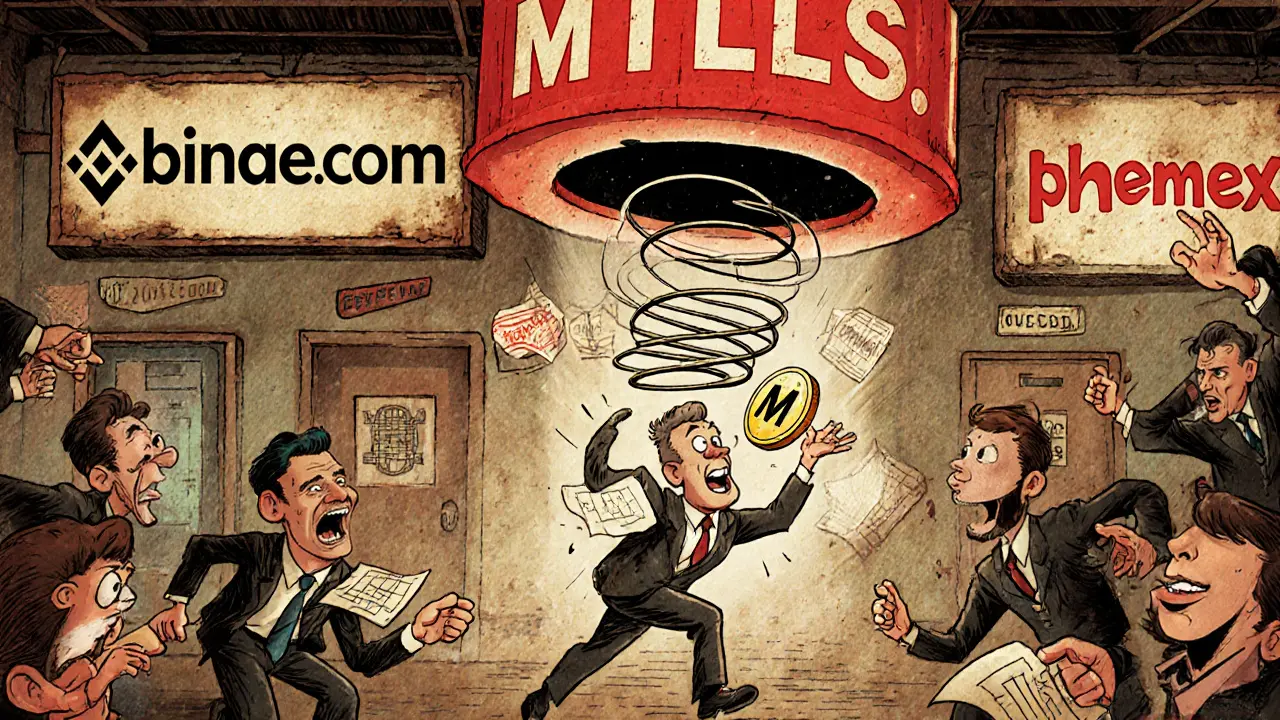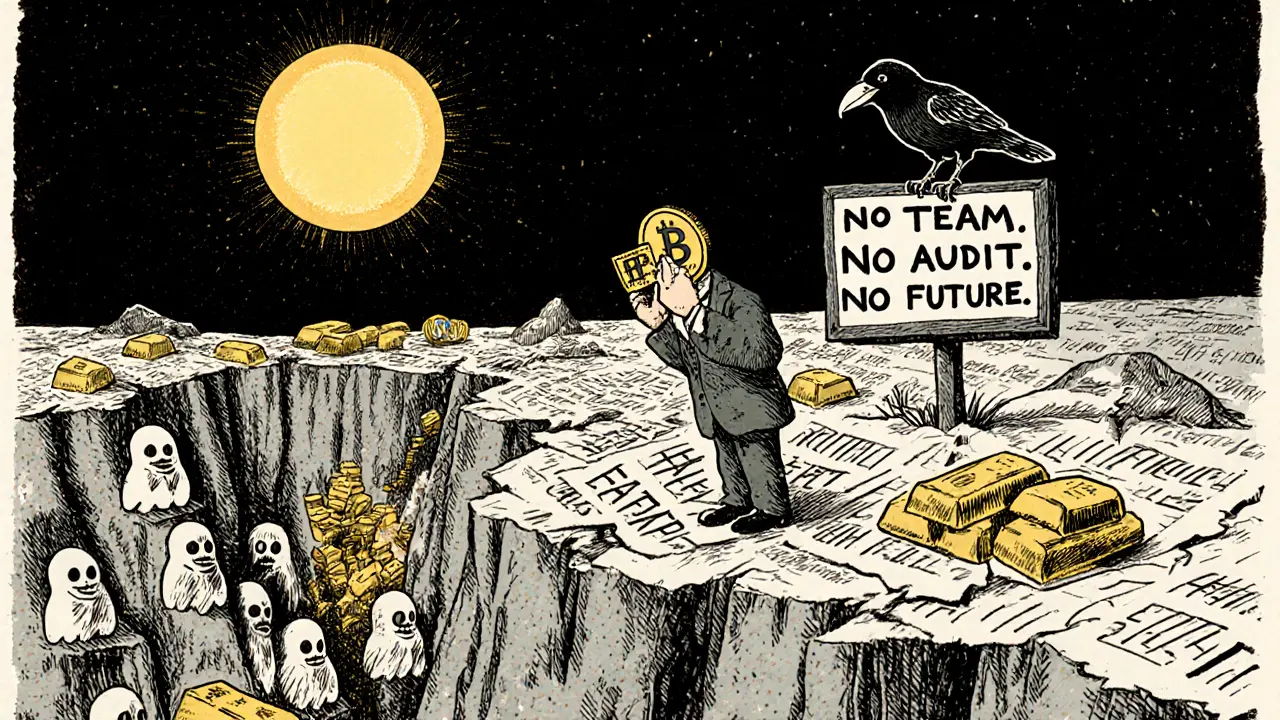MTLS Risk Assessment Calculator
Calculate Safe Investment for eMetals (MTLS)
Based on the article's warning that MTLS is a high-risk speculative asset with no transparency, this tool helps determine safe allocation limits.
This is not investment advice. MTLS has been identified as having no team, no whitepaper, no utility, and a market cap reported as $0 on major exchanges. Treat this as a lottery ticket - not an asset.
Your Safe Investment Limit
$0.00 is the maximum recommended investment for MTLS based on your portfolio and risk tolerance.
Important: This tool assumes you're investing in a highly speculative asset like MTLS with no transparency or utility. For comparison, Bitcoin's typical recommended allocation is 1-3% of portfolio.
When you hear about a new crypto coin like eMetals (MTLS), it’s easy to assume it’s the next big thing-especially if you see it listed on Binance or Crypto.com. But here’s the reality: MTLS doesn’t have a clear story. No whitepaper. No team names. No roadmap. Just a price chart and a contract address on Ethereum. If you’re wondering whether this is a real project or just another speculative token, you’re not alone.
What Is eMetals (MTLS)?
eMetals (MTLS) is an ERC-20 token built on the Ethereum blockchain. That means it doesn’t run on its own network-it piggybacks on Ethereum’s security and infrastructure. Its contract address is 0x197dc7a8a58a7e4f6a5cb82302e8646a125798e7, which you can verify on Etherscan or Cyberscope.io. The token’s name suggests it’s tied to metals-maybe gold, silver, copper, or other commodities-but there’s zero public documentation explaining how or why.
Unlike tokens like PAXG (Pax Gold) or Tether Gold, which are backed by physical metal stored in vaults and regularly audited, eMetals offers no proof of reserves, no storage receipts, and no third-party verification. It’s not a stablecoin. It’s not a commodity-backed asset. It’s just a digital token with a name that implies value it hasn’t proven.
Current Price and Market Data (November 2025)
As of November 3, 2025, MTLS trades between $0.0496 and $0.0529 across exchanges. CoinMarketCap lists it at $0.05029, Crypto.com at $0.04963, and Binance at $0.052863. That’s a 6.5% difference between the highest and lowest prices-unusual for a token listed on major platforms. This kind of spread usually means low liquidity or uneven trading activity across exchanges.
Trading volume fluctuates too. Binance reports $132K in 24-hour volume, Crypto.com shows $117K, and CoinMarketCap says $78K. These numbers aren’t huge. For comparison, Bitcoin trades over $20 billion daily. MTLS is trading in the bottom 5% of all cryptocurrencies by volume.
Here’s the strangest part: Binance lists MTLS’s market cap as $0 USD-even though it’s trading actively. That’s impossible unless the token supply isn’t fully circulating or the exchange isn’t counting all tokens. Either way, it’s a red flag. If a platform can’t calculate market cap, it’s not confident in the data.
Is There a Supply Limit? Unknown.
Cyberscope.io’s technical report cuts off mid-sentence: “eMetals has a current supply o...” That’s it. No total supply. No max supply. No distribution breakdown. No vesting schedule for founders or investors. That’s not just incomplete-it’s irresponsible. A legitimate project publishes this information upfront.
Without knowing how many MTLS tokens exist, you can’t calculate real market cap. You can’t assess inflation risk. You can’t tell if the price is being manipulated by a small group holding most of the supply. This isn’t just a missing detail-it’s a dealbreaker for any serious investor.

Who’s Behind eMetals? No One Knows.
There’s no website. No LinkedIn profiles for the team. No GitHub repository. No Twitter account with verified status. No Telegram group with more than a few hundred members. No press releases. No interviews. No whitepaper. Nothing.
Compare that to even obscure tokens like $PEPE or $WIF-they at least have meme-driven communities, Discord servers, and public founders. MTLS has silence. And silence in crypto usually means one of two things: either the project is so new it hasn’t had time to build presence, or it’s a rug pull waiting to happen.
Where Can You Buy MTLS?
You can buy MTLS on Phemex, Binance, and Crypto.com. Phemex even has a step-by-step guide for purchasing it. But here’s the catch: you won’t find it on Coinbase, Kraken, or Gemini-the platforms most retail investors trust. That’s not an accident. Major exchanges run strict listings reviews. If MTLS had a solid team, clear utility, or audited contracts, it would be on Coinbase by now.
Buying MTLS means trusting a token that’s only available on platforms that list almost anything. That’s not a feature-it’s a warning.
Why Does It Even Exist?
There’s no logical reason for eMetals to exist unless it’s designed for speculation. The crypto market is full of tokens with vague names like “Metals,” “Gold,” or “Ore” that pop up during bull runs. They get listed on small exchanges, get a bit of hype on TikTok or Reddit, and then vanish when the price drops 80%.
Some tokens like this are created by anonymous teams to rake in quick cash. They list on exchanges, pump the price with bots, then dump their holdings and disappear. The fact that MTLS has no transparency features-no audits, no team, no roadmap-makes it a textbook candidate for this kind of scheme.
And yet, people are still trading it. Why? Because the price moves. It went up 6.92% in 24 hours on Crypto.com. That’s tempting. But short-term pumps don’t equal long-term value. They equal risk.

Is eMetals a Scam?
It’s not officially labeled a scam-yet. But it ticks every box for a high-risk, low-transparency token:
- No whitepaper or official documentation
- No known team or company behind it
- No smart contract audit published
- Market cap reported as $0 on a major exchange
- Price varies wildly across platforms
- No community or social presence
- No utility beyond trading
It’s not illegal. It’s not banned. But it’s not safe either. If you’re thinking of investing, treat it like a lottery ticket-not an asset.
Should You Buy eMetals (MTLS)?
If you’re a day trader with a high-risk tolerance and you’re okay losing your entire position, then sure-buy a tiny amount. Maybe 1% of your crypto portfolio. But don’t buy because you think it’s going to be the next Bitcoin. Don’t buy because someone on YouTube called it “undervalued.” Don’t buy because the price went up yesterday.
If you’re looking for exposure to physical metals, stick to proven options: PAXG, Tether Gold, or even ETFs like GLD. If you want to speculate on crypto, pick tokens with real teams, audits, and clear use cases-even if they’re small.
eMetals (MTLS) has no story. No substance. No safety net. Just a price chart and a contract address. That’s not innovation. That’s gambling.
What’s the Bottom Line?
eMetals (MTLS) is a speculative ERC-20 token with no transparency, no team, no utility, and no credible information behind it. Its price moves, but its foundation doesn’t. It’s listed on a few exchanges because those platforms don’t vet tokens thoroughly. It’s tracked by CoinMarketCap because they include almost anything with trading volume.
There’s no evidence it’s a scam. But there’s also no evidence it’s anything more than a digital placeholder with no real-world value. If you’re curious, you can buy a few tokens for $2 or $5. But don’t expect it to grow. Don’t expect it to last. And don’t expect anyone to answer your questions when it crashes.

